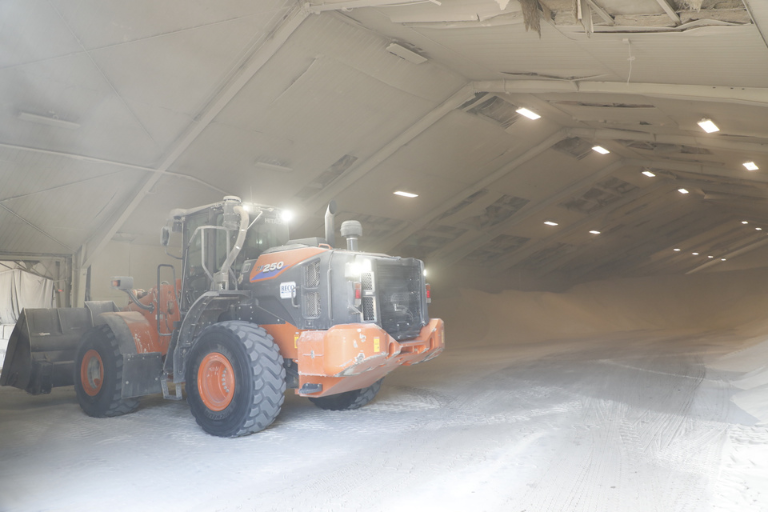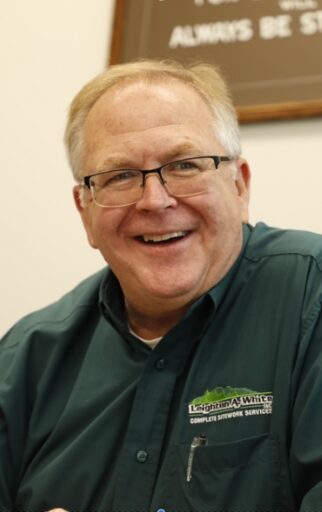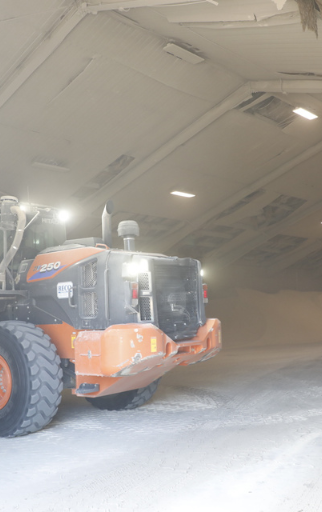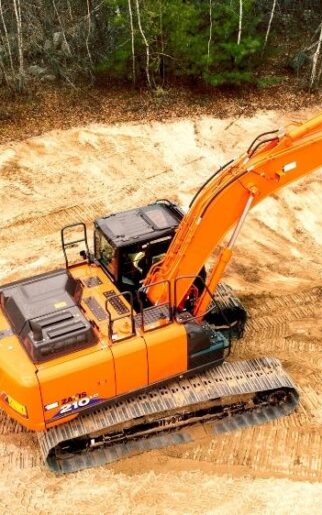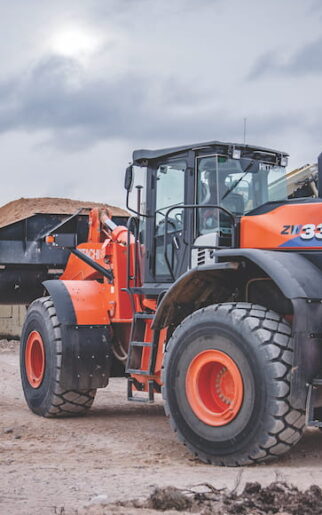Oil and natural gas companies consume massive quantities of frac sand. Up to 10,000 tons (9,071.8 MT) of frac sand can be used for each well. To keep up, companies that supply the sand must efficiently operate around the clock with minimal downtime. MPR Transloading Supply Chain Solutions (MPR), located in Bellaire, Ohio, is well positioned to tackle this task.
The facility is a Gateway Distribution Point, minutes away from major north-south, east-west transportation routes and within 24 hours of both the United States and Canada including some of the largest material-consuming regions in the country. The logistics company uses the latest transloading equipment and technology to efficiently move materials. It uses the largest material handlers in the region, allowing more material to be quickly moved.
MPR Transloading Supply Chain Solutions is a family-owned and operated riverfront transloading facility that began in 2009 with three employees. The company quickly expanded and currently employs 40.
Frac sand presents opportunity
 In late 2015, MPR Transloading Supply Chain Solutions opened a frac sand terminal to support the fracking process in the oil and natural gas industry. Frac sand is injected into rock formations along with water. The sand props open fractures created during the hydraulic fracturing process to allow oil and natural gas extraction. Due to the company’s location in relation to the well sites, MPR Transloading Supply Chain Solutions has become a premier outlet for frac sand, using its transloading equipment to move large quantities with minimal disruption.
In late 2015, MPR Transloading Supply Chain Solutions opened a frac sand terminal to support the fracking process in the oil and natural gas industry. Frac sand is injected into rock formations along with water. The sand props open fractures created during the hydraulic fracturing process to allow oil and natural gas extraction. Due to the company’s location in relation to the well sites, MPR Transloading Supply Chain Solutions has become a premier outlet for frac sand, using its transloading equipment to move large quantities with minimal disruption.
“We handle the logistics. “We load trucks 24 hours a day, 365 days a year,” said MPR President Natalie Brown.
Wheel loaders serve a critical role in handling the sand. Twelve to 16 operators keep two Hitachi Construction Machinery Americas ZW250-6 wheel loaders in constant motion
“We currently handle between 1 and 1.25 million tons (.91 to 1.14 MT) of sand a year,” she said. “We unload approximately 570 barges of sand a year. The wheel loaders are being utilized to move that sand after it is moved into the storage building.”
Overcoming transloading equipment challenges
Handling this fine sand presents several unique challenges for workers and transloading equipment. It is not like any other sand. It is made from tiny pieces of quartz-silicon dioxide that is only found in a few places, mainly in the Midwest near the Great Lakes. This abrasive, crush-resistant quartz sand can be as small as .004 inch (0.1 mm) and often ranges in size between .016 inches and .031 inches (0.4 mm and 0.8 mm). With these fine particles, any disturbance can create airborne dust.
“Due to the sand being silica sand, it’s a very dusty environment,” Natalie explained. “We have to protect our equipment and we have to protect our employees. We do rigorous health testing for our employees and they utilize special breathing apparatuses to work inside the buildings. We even require protection inside the loaders.”
This is a brutal working environment for heavy machinery. The airborne, abrasive fine particles can easily damage and shorten the life expectancy of an internal combustion engine if allowed to enter the combustion chamber. Stock air filtration systems are not designed to capture a large quantity of these extremely small particles. MPR turned to local Hitachi Construction Machinery Americas dealer RECO Equipment for a solution. RECO Equipment, Inc. solved the challenge by fitting MPR’s wheel loaders with specialized air filtration that allow them to reliably operate in this unique environment.
Performance of the Hitachi Construction Machinery Americas wheel loaders, backed by the support of RECO Equipment, has proven valuable optimizing transloading equipment fleet efficiency.
“We’ve used several different brands, but we like how the Hitachi Construction Machinery Americas loaders perform, coupled with the parts availability,” said MPR Vice President of Operations Justin Brown.
Matching job site requirements
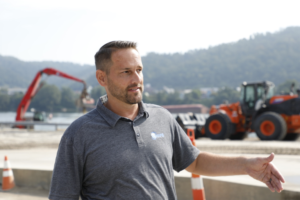 Before MPR considers any wheel loader for its operation, the machine must meet several job site criteria. Each wheel loader must be able to maneuver in tight quarters with a small turning radius and meet the height clearance restrictions between the two buildings used to store the frac sand.
Before MPR considers any wheel loader for its operation, the machine must meet several job site criteria. Each wheel loader must be able to maneuver in tight quarters with a small turning radius and meet the height clearance restrictions between the two buildings used to store the frac sand.
“The ZW250-6 meets all the requirements that we need to operate in our facilities. This includes the clearance when dumping into hoppers,” noted Justin.
The company uses a rollout bucket to allow the wheel loader to dump over its hinge pin height. An oversized 5.5-cubic yard (4.21 m3) bucket optimizes the ZW250-6 wheel loaders for the application. The 253 HP (186 kW) loaders have the power required to perform in the dense frac sand, which weighs about 3,000 lb/yd3 (1,779.8 kg/m3).
Natalie added that visibility is considered when comparing wheel loaders. Backup cameras on the ZW250-6 wheel loaders are important in this application since the machines maneuver in tight quarters inside the buildings.
No time for rest
The ZW250-6 wheel loaders remain in constant motion, running an average of 5,000 hours throughout the duration of the two-year lease. MPR depends on these loaders to keep frac sand flowing through its facility and to keep customers happy. Equipment is turned frequently due to its high utilization.
Functionality is important to the operators, which is also a job site requirement. This includes ease of maintenance.
“One operator mentioned that when you open the hood, all the vitals that need to be checked are right there,” said Justin. “The operator doesn’t have to walk around the machine to perform checks. It makes it easier for them.”
Ensuring the operation runs smoothly is another area where RECO Equipment plays a critical role in MPR’s success. They monitor and maintain the wheel loaders with ConSite Global e-Service to track upcoming maintenance needs and minimize downtime.
MPR realizes the benefits offered through ConSite Global e-Service and is working with RECO Equipment to get important notifications sent directly to its management staff.
“The output of the faults that are emailed out, that’s an added bonus so that we know if there is an issue,” Natalie said. “It is very nice to be alerted if there is an issue that arises so we can react immediately and not wait until something fails. We can fix it before it becomes a catastrophic failure.”
At the end of the day, MPR promises to move materials wherever they need to go without any headaches along the way. In its frac sand business, the reliability and performance of ZW250-6 wheel loaders allow the company to achieve that goal.

